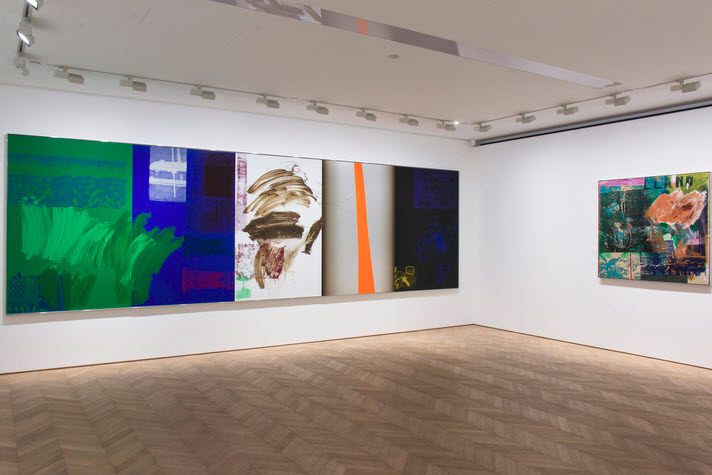ART CITIES:Hong Kong-Robert Rauschenberg
 Considered by many to be one of the most influential American artists due to his radical blending of materials and methods, Robert Rauschenberg was a crucial figure in the transition from Abstract Expressionism to later Movements. One of the key Neo-Dada Movement artists, his experimental approach expanded the traditional boundaries of art, opening up avenues of exploration for future artists.
Considered by many to be one of the most influential American artists due to his radical blending of materials and methods, Robert Rauschenberg was a crucial figure in the transition from Abstract Expressionism to later Movements. One of the key Neo-Dada Movement artists, his experimental approach expanded the traditional boundaries of art, opening up avenues of exploration for future artists.
By Dimitris Lempesis
Photo: Pace Gallery Archive
Robert’s Rauschenberg innovative fusions of Painting, Installation, Photography, Printmaking and Performance art had helped build the experimental movement Neo-Dada, given new definitions to paintings and assemblage, and had an immense influence on the creation, and the success, of Pop Art. Robert Rauschenberg’s 60-year-spanning career makes up one of the most crucial parts of the artistic landscape of the 20th Century. Pace Gallery presents an exhibition with five works of Robert Rauschenberg spanning from the end of the ‘70s to the early ‘90s. In the late ‘70s, Rauschenberg’s creative focus shifted from Performance Art to Combine Painting, resulting in his Slide series, which combines canvas, photographic printing and other flat materials in sweeping compositions. The exhibition features the work “Forged Gift” (1979) from this series. For the works in the Shiner series, created between 1986 and 1993, the artist silkscreened his own photographic images onto steel or mirrored aluminum plates alongside three-dimensional metal objects. “Canine E Cane” (1987) uses an image that the artist captured during his travels in Venezuela for Rauschenberg Overseas Culture Interchange (ROCI), a self-funded artistic and philanthropic initiative that Rauschenberg carried out between 1984 and 1991 in 10 countries to promote peace and cross-cultural communication. “Earth Haunts” (1985) from ROCI Venezuela uses acrylic and sand, creating a textured surface that is further emphasized by the effect of the layered imagery. From ROCI Malaysia, “Hutan Belantara” (1990) reflects Rauschenberg’s attention to the environmental destruction in the region and his underlying concern for the conflict between urban and indigenous cultures in the country. Also included in the exhibition is “Around the Clock” (1993), a work from the Urban Bourbon series, which continues the integration of overlapping imagery with gestural brushstrokes to create reflective depth in a five-part work that uses two kinds of metal as its surface.
Info: Pace Hong Kong, 15C Entertainment Building, 30 Queens Road Central, Hong Kong, Duration: 21/3-12/5/16, Days & Hours: Tue-Sat 11:00-19:00, www.pacegallery.com


